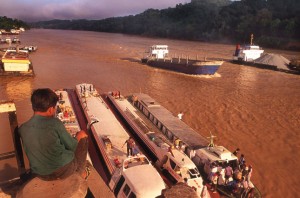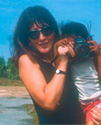Creating Empathy – in Rain Forest
Creating Empathy – in Rain Forest
Lately, my own personal photographic journey has been making unusual twists and turns. I’ve gone from being an avid reader of lighting and other technical aspects of photography to devouring anything to do with .....neurobiology.
A big leap. Or not. When I started to teach photojournalism to kids, I saw that the fundamental visual elements (the action, the lighting, the composition, the subject...the story) could trigger a deep emotive response. Or rather, SEARCHING FOR (observation) these elements, finding them (discovery) – and analyzing them drew the viewer – in this case, a room full of kids age 8 – 14 year-olds, into the image. Into the story. Right into the life of the child in the story. Powerful stuff.
Back to neurology. In a recent article in the NY times, I read about new discoveries in neurobiology. People have dual neural pathways – one for critical thinking; the other for creative thinking. Although only one path can be on at any given time, they can trigger each other off. Feed off each other. Educated guesses, and thoughtful analysis can stem from the pathways tapping into each other: the critical integrates with the empathetic, taking emotions as well as reason into account.
Back to the kids in my workshop. These weren’t an arty bunch (at least not to my knowledge). They were the usual suburban mix of loved kids, smothered kids, kids with helicopter moms, kids with concord moms (breaking sound barriers as they hot-tailed out of the school drop-off zone), advanced learners, special needs kids with ADHD, and some with seriously anti-social behaviors. Kids who barely spoke English. Kids who spoke too much English. Kids who thought that riding the elevator up and down and setting off the alarm was the epitome of fun (this was before texting/cell phones really took off. Kids were noisier back then.) Bear in mind, this was summer time. Vacation time. Fun time. Instead of being outside, they were cooped up in ‘school’. And yet, when I dimmed the lights and switched on the projector, this ...melting pot... of super energetic American diversity sat riveted, their eyes fixed to the images projected onto the wall (we didn’t have a screen). They were engaged. Fully 100 % engaged. The kids with ADD may have been bouncing off the walls, but their eyes never left the images. It wasn’t just the images. I was capturing – and directing - their attention through questions.
The questions became the compass and map. They provided a guided analysis; directing the kids to search for - and to analyze the clues. Two neural pathways working in perfect tandem. By asking the right questions, my students wrung every ounce of meaning out of every clue they tracked down. Look at the river. What colour is it? Why? Look at the background. What does that tell us about the colour of the river water? About the local economy? About the culture? Climate? The background information I offered was DEVOURED, and helped them to make educated guesses. To differentiate assumption from fact. Discussions blossomed. Experiences were shared. Similarities and differences compared. Connections were made. We pulled out maps, found countries, discussed waterways. Trade routes. Logging. Local economies. Ecology. We looked at these issues from different perspectives. Curriculum subjects like geography, environment, science, economics snuck in - included math - sprung to life, and gloried in the unaccustomed enthusiastic attention.
Above all, my students didn't just 'feel' empathy - they generated it themselves.They found the connections, connected the local and global. They nodded knowingly when I told them that Lanau, the Iban boy in Borneo, wanted to hang out with his friends and watch TV. But when Lanau’s uncle frog-marched him into the rainforest, so he could pick up a few survival skills, things got seriously interesting. My students were right there with Lanau, learning about plants that heal, plants that kill, insects that kill (they loved this part), insects that blend into the background. When Lanau almost stepped on a centipede, and his uncle warned him to pay attention, my students were doing nothing but. The number one rule of rain forest survival is paying attention. Observant people – observant KIDS – tend to stay alive in the rainforest. They drank it up.
What bowled me over was the sheer amount of empathy generated. My students become close to the kids portrayed. By analyzing the information – information they found themselves – my students owned the experience. They knew Lanau. They became Lanau. Literally. The formed groups and wrote collective essays about the experience - from Lanau’s point of view. They had generated their own light with which to illuminate and better understand a little slice of the world. It allowed them to see – and almost experience - another child’s life, in another culture, in a place many would most likely never see. Complex global issues became clearer, a little less abstract, because they could see the affect – on a child they felt they now knew. Empathy.
As the world becomes ever more interconnected, as cultures collide and sometimes connect, the ability to empathize - to see from another’s perspective – is increasingly important, To have the ability to put yourself in someone else’s shoes. Or culture. Or situation.
And photographs can do that. I knew that with real certainty as my students scrutinized images – searched for clues, discussed, argued, compared, and analyzed the story they found within the details, I could almost see their minds working on two levels. Analyzing. Inferring. Creating. Emphasizing.
And I discovered something. I discovered one very important thing about kids. They love to learn. And the photographs let them do what they wanted to do. Explore. Discover. Hunt for clues. Analyze the clues. Make connections. They were learning about the world - and their connection to the world.


